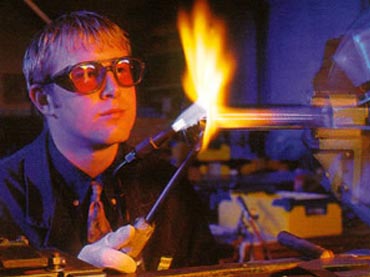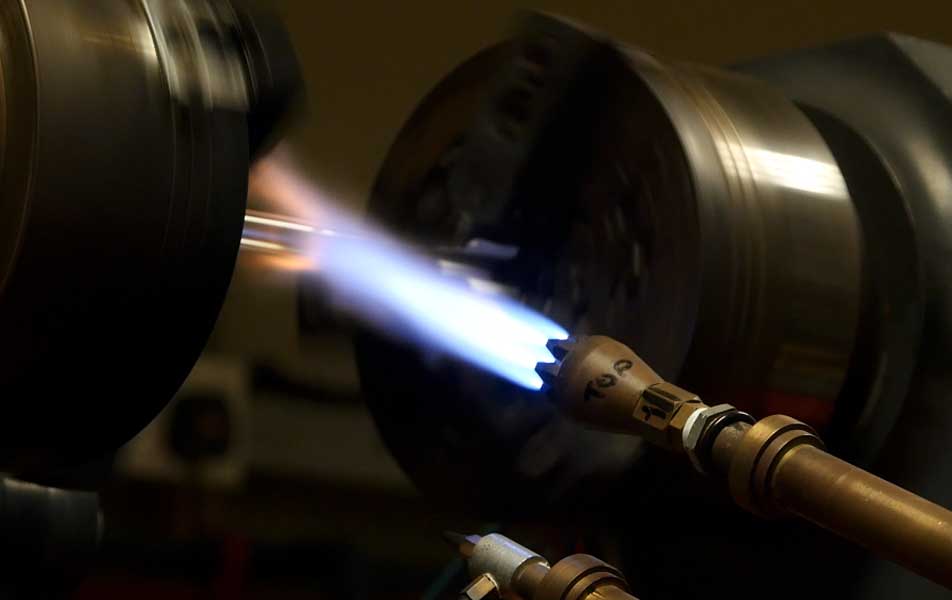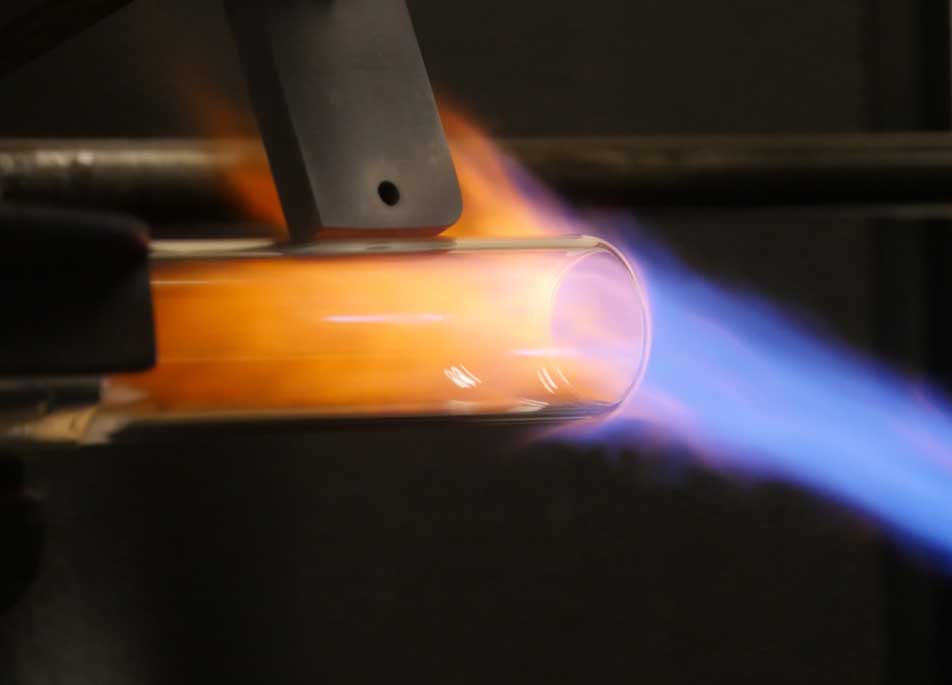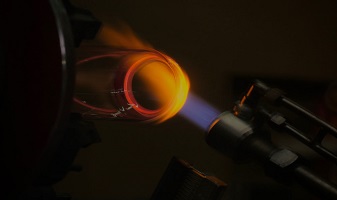Glass blowing is an ancient art form that has been practised for centuries. Before the technique was invented, glass was made by various other methods, but now, in places such as Moore’s Glassworks, expert glassblowers continue to use this method.
Our team are experts in glassblowing, and that’s why we’ve put together this comprehensive guide on glassblowing, how it started, who did it, and what it can be used to do.
Let’s take a look.
How was glass made before glass blowing?
Before glass blowing, glass was made by pouring liquid glass into a furnace and slowly cooling it.
Then, a glass craftsman would mold or sculpt the piece using a solid iron rod known as a pontil. This process resulted in complex shapes and forms, such as handles.
It is not known when glass blowing first started, but it likely began during the 2nd millennium BC.
It was first invented in Syria and before the method was picked up by ancient Romans.
The first blown glass pieces were thinner and more viscous, and easier to work with.
During the Roman period, glass blowing became popular and glassmaking workshops were set up in many areas of the Roman world, including Lebanon.
Around this time, the products people would mostly make were glass vessels.
They shaped thin strands of glass around a central core of clay or sand and then rolled it on a smooth surface. It is believed that these ancient craftsmen may have used metal tools to make patterns in the molten glass.
Glassmaking was a serious business for the Romans in the first century BC.
There is a famous story by the write Petronius, which tells that a craftsman presented a glass piece that was unbreakable to King Tiberius.
When the glass was thrown to the ground, it didn’t shatter, but merely dented. The craftsman was asked to show others his technique, as he was the only person in the world who supposedly knew it.
The craftsman was excited and believed he had made big money, but Tiberius had other plans.
Eventually, Tiberius beheaded the craftsman without warning. It is believed the reason was that Tiberius was worried that this new, unbreakable glass was going to devalue all other currency, so he eradicated the only person who knew of how to make it.

How has the technique of glass blowing evolved?
The technique of glass blowing has been around since ancient times.
Though the methods have changed over time, the basic concept has remained the same. In fact, there is evidence that glass-making dates back to the Phoenicians’ time, circa 50 BCE.
These ancient glassmakers blew air into the glass to shape it and create beautiful pieces. The technique was later adopted by glass-blowers in the western world.
Glass blowing is a complex and time-consuming process. Its roots date back to the first century BC, when the Syrians first started blowing glass. This process later spread throughout the Roman Empire.
Craftsmen in the Roman empire began using molds in conjunction with the technique of glass blowing, and they began to experiment with gold and silver inlays and colors.
By the 4th century AD, glass-blowing was widespread in the Mediterranean and Eastern Mediterranean regions. By that time, the technique was practiced by people in Egypt and the Middle East.
The technique of glass blowing has evolved and become more complex as the centuries have passed.
Modern glass blowers use different techniques and materials. Many studios offer tools and classes for glassblowers to learn how to make glass objects. A skilled glassblower can shape virtually any vessel form or create a wide range of glass objects.

Who are the most famous glass blowers?
Some of the world’s most celebrated glass blowers have been making art for decades.
Some, such as Jason Lee, have been blowing glass for more than two decades and their work has become a benchmark for other glassblowers.
Unfortunately, glassblowing can be a tricky industry to get into, but when you do get in, it can be elusive, with many opportunities to create products to sell.
Probably the most famous glass artist is Dale Chihuly.
Chihuly studied glass at the University of Wisconsin in Madison where he received a full scholarship before receiving a Fulbright Fellowship and going on to study in Italy, where he learned the techniques of Murano glass masters.
The American artist is best known for his large installations and colorful glass pieces, but he has also created many smaller works which are just as revered.
Among his work are chandeliers and freestanding pieces that are huge, grand items that can contain hundreds of individual glass pieces.
Chihuly is also a strong advocate for making art accessible to people of all backgrounds and levels of education. In addition to funding individual artists, the Dale and Leslie Chihuly Foundation also supports glassblowing workshops and schools.
Another glass artist, Takeshi Sano works with an older style of glass blowing.
His pieces are created through a process called “lost wax casting,” which is multi-staged and time-consuming.
The artist is passionate about glass and is known for creating glass works of art out of his SANOSANO studio in Japan that have a unique aesthetic voice.

Equipment needed for glass blowing
In glass blowing, it is necessary to have various tools that will help you.
Some of these tools are essential for the creation of beads, and are called mandrels.
They are usually made of metal and can come in different sizes. Mandrels help mold the molten glass into desired shapes, and are essential in the final stages of glass blowing.
Mandrels also help the glass to cool and flatten out after it has been blown.
Another piece of equipment needed for glass blowing is a glass pipe.
This type of blowpipe allows consistent air to be blown into the molten glass.
Most glass pipes have a shaft near the handle and allow for movement of the project.
Glass shears are another tool needed for glass blowing. These tools have a long handle and short blade, which gives you leverage when cutting the glass. You can also use regular utility shears to cut glass.
A glass temperature controller is also essential for glass blowing.
It helps hold glass at a specific temperature and ramps it up and down.
These are usually digital, although there are analog and mechanical ones available.
Most glass blowing studios have a furnace under control, but you can also find annealers and small units that serve as garages for hot glass.
Many glass manufacturers, such as Moore’s Glassworks, use auto-lathe machines to aid their glass production, and these machines are a great way of supplying accurate products. If you want to know more about our auto-lathes, then check out our auto-lathe guide here.
Glass Blowing at Moore’s Glassworks
We have a team of experienced and highly-skilled glass blowers who ensure quality products every time.
If you want to know more, or have a project in mind, then get in touch today to see what we can do.


Leave a Reply